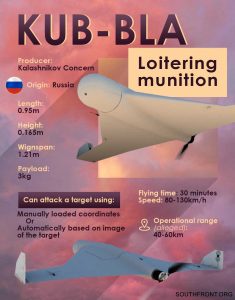On January 27, Russian sources shared footage documenting a strike with a KUB-BLA suicide drone on a Ukrainian American-made AN/TPQ-36 Firefinder counter-battery radar.
The drone strike inflicted heavy damage on the radar, which was reportedly deployed near the settlement of Umanske in the Donetsk People’s Republic.
The AN/TPQ-36 was developed to locate the source of artillery, rocket and mortar fire. Kiev forces first received two Firefinder radars after the outbreak of the conflict in Donbass in 2014. More were supplied by the United States and its allies last year in response to the Russian special military operation in Ukraine.
The x-band radar scans the horizon over a 90° sector several times a second, intercepting and automatically tracking hostile projectiles, then computing back along the trajectory to the origin. It can detect and report the positions of up to ten different weapons in seconds, at a maximum range of 24 kilometers.
The KUB-BLA suicide drone which was used to target the radar was developed by the ZALA Aero Group, a s subsidiary of Russian defense giant Kalashnikov.
The drone has an operational range of 40-60 kilometers, an endurance of 30 minutes and a speed of 80 to 130 kilometers per hour. It is armed with a HE-Frag [high explosive fragmentation] warhead that weights three kilograms. As seen in the AN/TPQ-36 strike footage, the warhead of the drone explodes over the target with the help of a proximity fuze. This maximizes the damage inflicted on the target.
The Russian military has been using the KUB-BLA and other types of loitering munitions against high-value equipment of KIev forces since the beginning of its special operation in Ukraine with much success.
- Estonia Is Weighting Supplying Ukraine With German-Made Cluster Artillery Shells
- In Video: Russian Krasnopol Guided Artillery Round Wins Dual With Ukrainian M777 Howitzer






